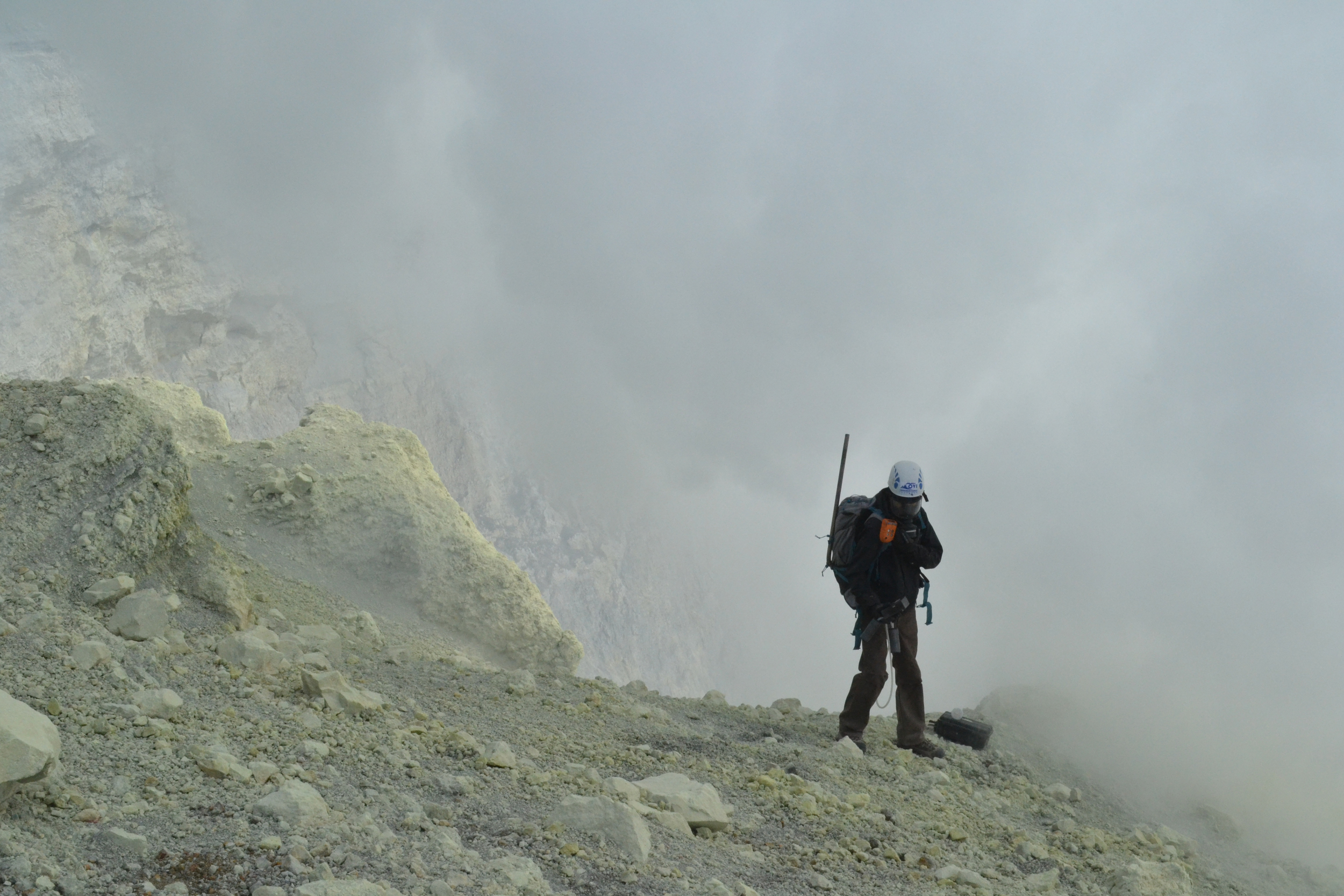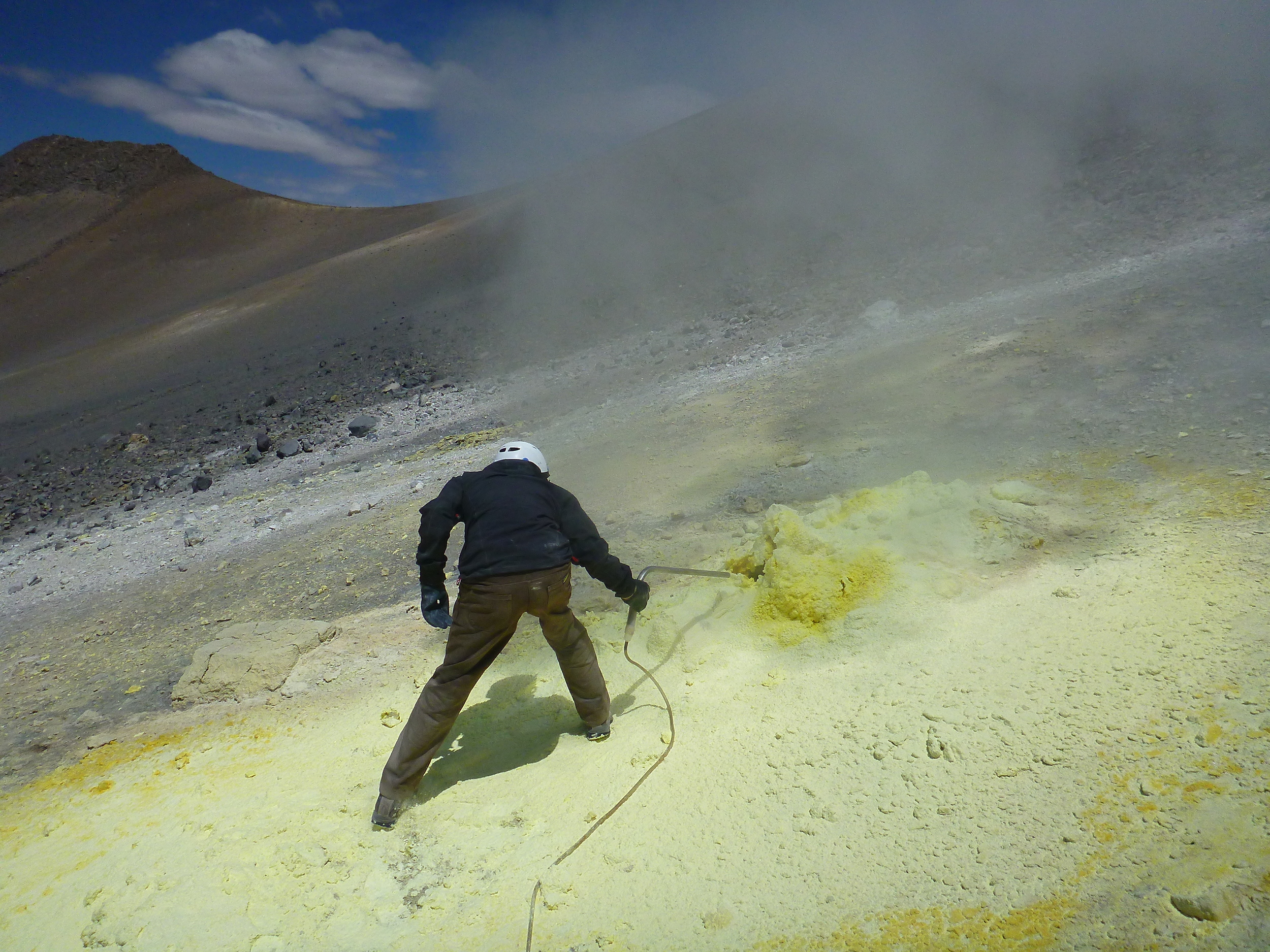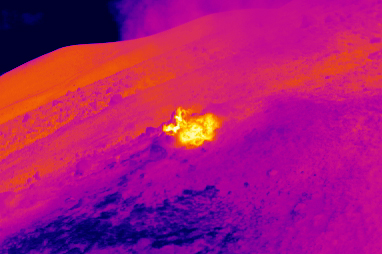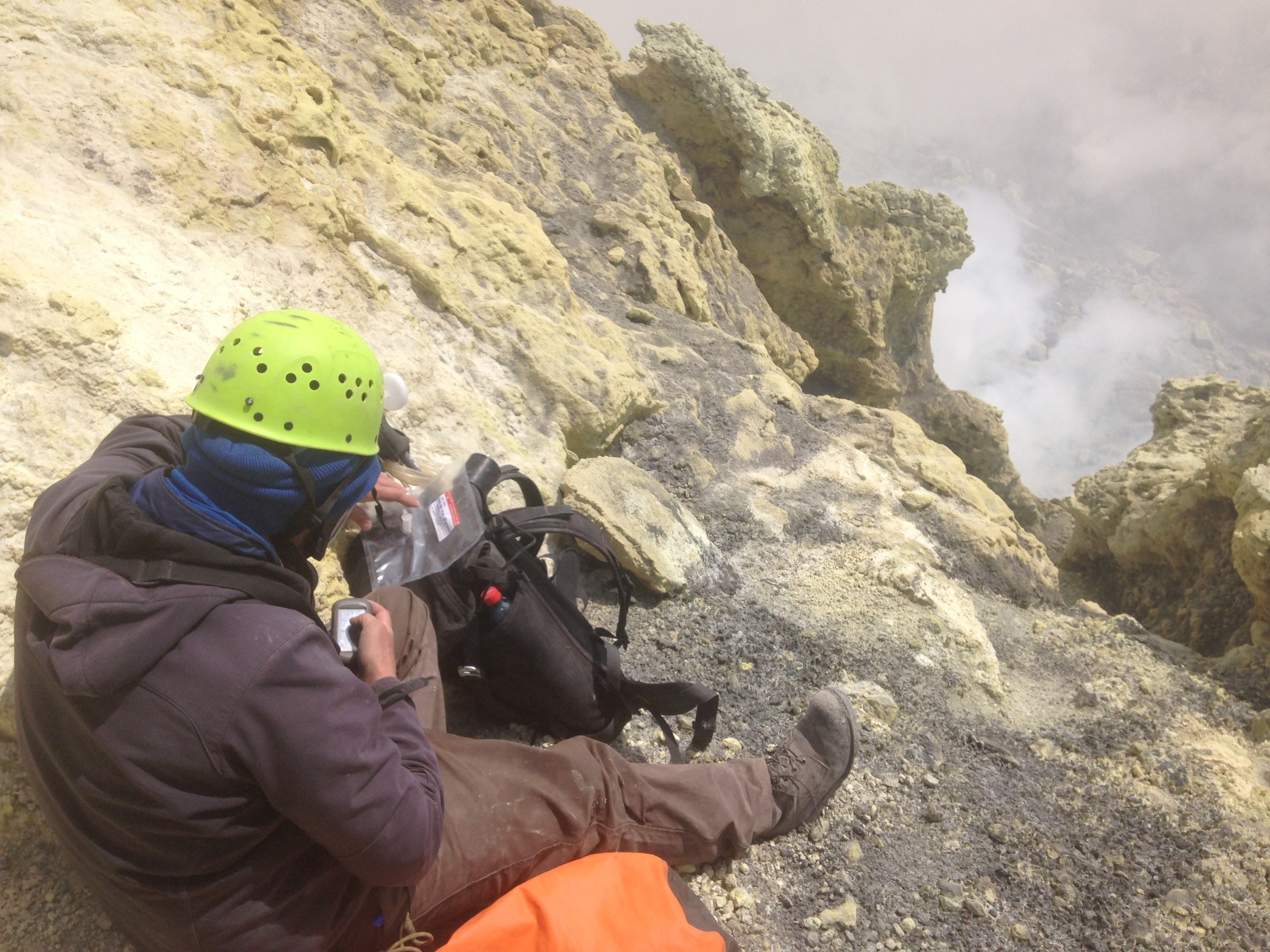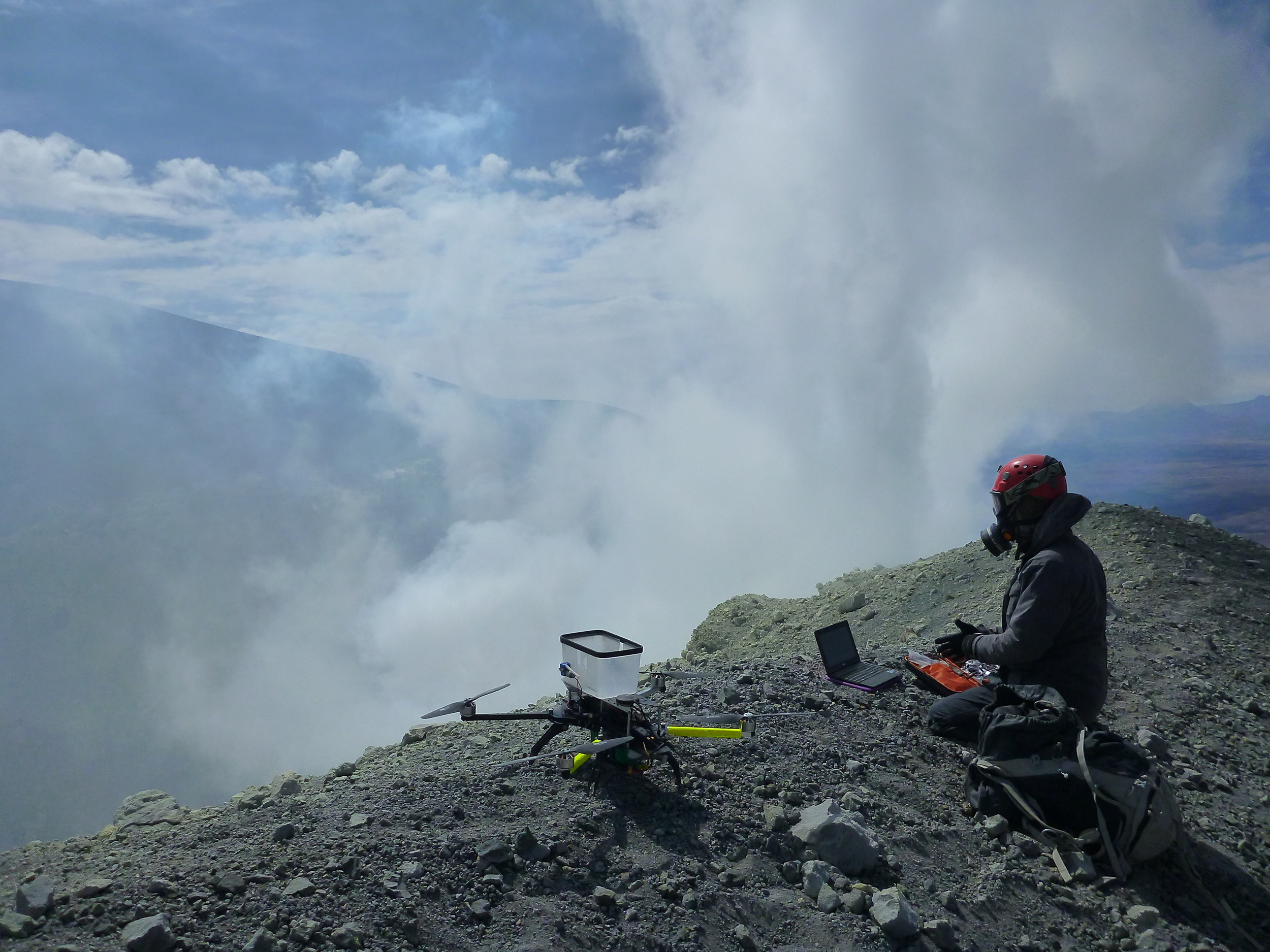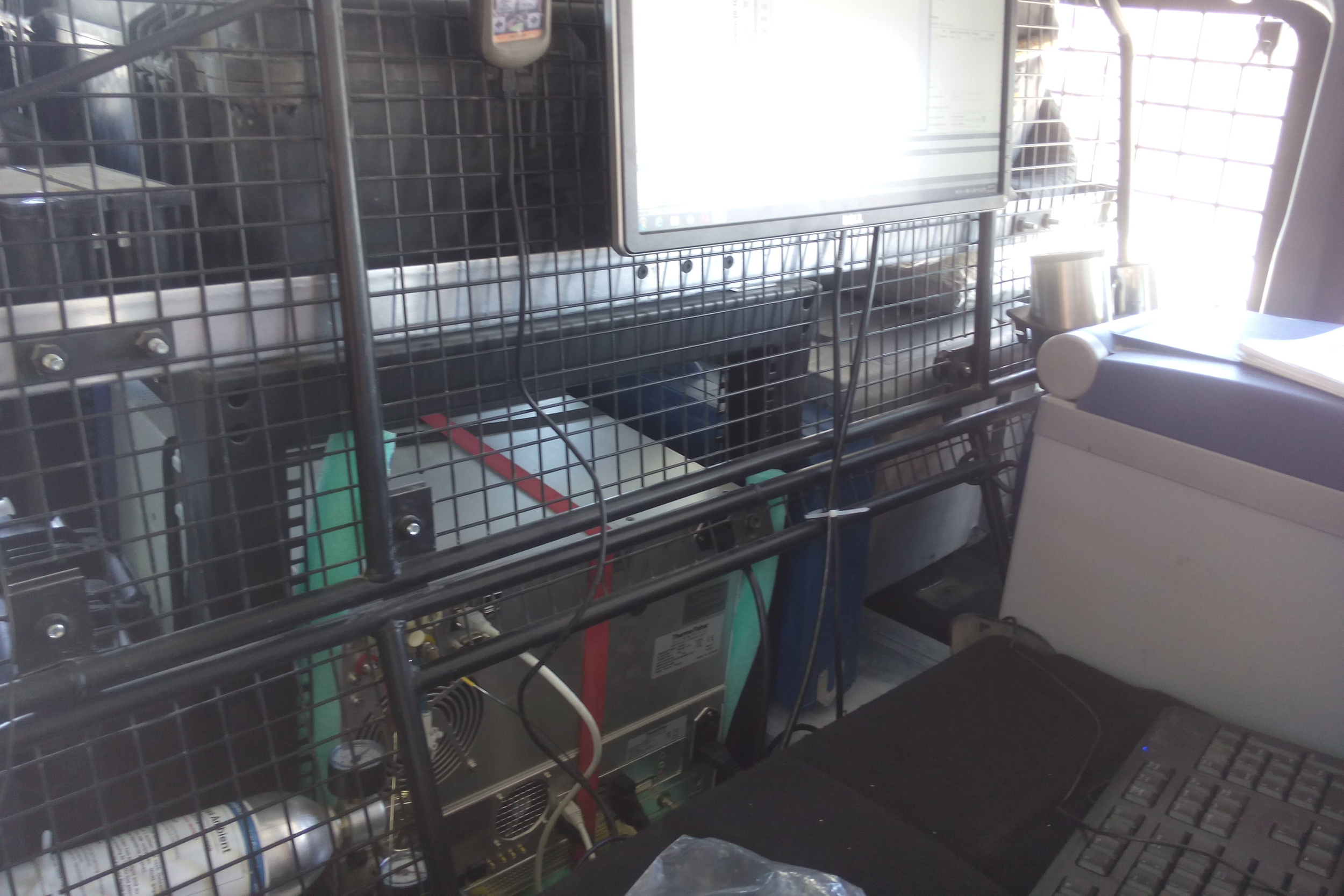Looking down into the Islgua valley, where the Land Rover anxiously awaited our return.
The Trail By Fire leaves no pumice unturned in our search for volcanic action. And with over 100 active volcanoes in Chile alone (the actual number depending on who you ask), there are surprises around every corner.
Waaay back on the Hydrothermal Loop, some locals suggested we pass by Volcán Isluga, near the Chile-Bolivia border. At that time, we spotted some fumaroles on the horizon that provided an opportunity to test our remote sensing gear. We figured we’d return if time allowed – it was a pretty spot, a valley full of Suri (large flightless birds) and other wildlife – but volcanically speaking, we didn’t think there was much to this sleepy border volcano...
Suri on the move.
Just another set of fumaroles?
We couldn’t have been more wrong.
Our Christmas day ascent up the 5500 metre Isluga brought us face to face with the gaping maw of an active beast! The fumaroles we had seen from below were nothing but the coattails of a 300-metre deep, sulfur-encrusted open vent that was spewing forth torrents of gas!
Nial, making sure of his footing at edge of the monster's mouth.
This was no time for Christmas crackers and figgy pudding. It was time for action. The team unleashed the full arsenal of instruments: two MultiGas Boxes, direct sampling gear, UV and IR Cameras, DOAS, and in its full glory for the first time, the Thermo Fisher Delta Ray Spectrometer.
The noxious brew being emitted from Isluga was so concentrated, the team struggled to find a place for the MultiGas boxes where their gas sensors were not saturated! Yves, like a true Olympian, thrust his titanium javelin into one of the fumaroles, only to have it spit back out at him!
Ian set out to collect some of the precious and abundant CO2 that was pumping out of the crater, collecting it in Tedlar bags for carbon isotope analysis on the Delta Ray. Meanwhile, Aaron pulled another daring aerial maneuver, using a flying Tedlar bag gas sampler to collect CO2 from overhead (with a custom Crossfire-enabled Turboace Matrix). Tedlar bags allow the collection of gas for short-term storage before analysis. They are perfect for use with the Delta Ray, which we cannot bring up to the actual crater rim, but which is mounted and ready to go - in true mobile volcano observatory style - in the Land Rover.
The use of Tedlar bags allows us to take many samples from different places around the summit of the volcano: direct from the plume, from fumaroles, and from the background, and analyze all of them for isotopes of carbon in CO2 on the Delta Ray mounted in the vehicle. Previously, the only way to obtain such data would have been to collect a small number of samples in fragile glass vials, and transport them home to the laboratory for analysis on a mass spectrometer. By analyzing them on-site, we not only can use more samples, we can immediately identify which samples are useful and not so useful, and can modify our sampling strategy on-the-fly. Not only that, but the name "Delta Ray" conjures imagery of both Chuck Norris and Star Wars, and the Trail By Fire are happy to align themselves with both of these things.
We learned that just because you've never heard of a volcano, doesn't mean it's not a monster! And it seems that Volcán Isluga is itself like Chuck Norris: It never sleeps. It just waits.
